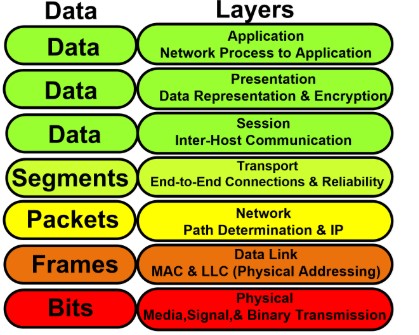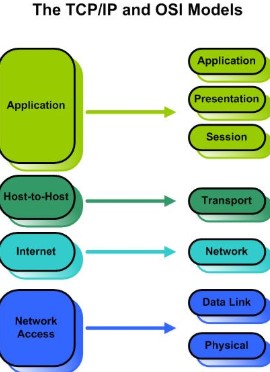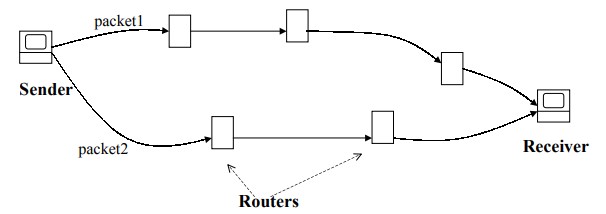- With respect to class 8 Networking, to exchange data and perform an action, we have a group of computers and other devices connected together which are known as Network.
- These devices on the network can be thought of as a node which has a unique address, which is a numeric quantity.
With respect to class 8 Networking, we have two principle kinds of networks:
Wide Area Networks (WANs) and Local Area Networks (LANs)

Wide Area Networks (WANs) with respect to class 8 Networking
- This network connects computers to a larger extent
- It widely covers cities, countries, and continents.
- Packet switching technology is used here.
Local Area Networks (LANs) with respect to class 8 Networking
- This network connects computers to a smaller extent
- It covers networks with a building or closely related buildings.
- Examples of LANs are - Ethernet, Token Ring, and Fiber Distributed Data Interconnect (FDDI).
Ethernet LANs – Communication-based on a bus topology.
Token ring LANs – Communication-based on the ring topology
FDDI LANs – Communication uses optical fiber and is based on the token ring mechanism where two rings flow in the opposite directions.
OSI Layers

Physical layer with respect to class 8 computer lessons –
- This layer uses electronic circuits for data transmission.
- The main role of this layer is to ensure that the data is shared in a safe and efficient way.
Data link layer with respect to class 8 computer lessons –
- The main purpose is to interpret the information in the physical layer.
- Any error is detected here in this layer.
- It is responsible for data encapsulation, where the data is encapsulated in the form of packets.
Network layer with respect to class 8 computer lessons –
- Network layer helps to transfer the packets from a source A to a destination B.
- The main role is to route the information.
Transport layer with respect to class 8 computer lessons –
- It is useful to delivery the packets from a source A to a destination B.
- Also, this ensures an end to end error control.
Session layer with respect to class 8 computer lessons –
- It is responsible for the management of network access.
- Network access includes authentication, permissions and session restoration.
Presentation layer with respect to class 8 computer lessons –
- It determines the format of the data transmitted to applications.
- It performs tasks such as data compressing/decompressing, encrypting etc.
- It codes into 0s and 1s.
Application layer with respect to class 8 computer lessons –
- This layer contains the applications which are used by the end-user.
- Example – The paint program that we use on our computer.

TCP/IP Model with respect to class 8 Networking
- Protocols define the set of rules that govern the communications between two computers connected on to a network.
- It addresses and routes the messages, detects the error and recovers them, sequence and flow controls etc.
- TCP - Transmission Control Protocol
- IP - Internet Protocol
The TCP/IP Model consists of 4 layers they are:
- Application layer
- Transport layer
- Internet layer
- Network layer
Network layer with respect to class 8 Networking -
- In the OSI model, it performs the same function as the physical, the data link and network layers.
- The IP addresses and network physical addresses are mapped here.
- Encapsulation of IP datagrams.
Internet layer with respect to class 8 Networking -
- Internet layer helps in providing the frame for transmitting data.
- These data are transmitted from place A to place B.
- Data transmission is based on the Internet Protocol (IP).
- It usually lies at the heart of TCP/IP.
Transport layer with respect to class 8 Networking -
- Works based on two main protocols which are TCP (Transmission Control Protocol) and UDP (User Datagram Protocol)
- TCP - It guarantees safe delivery, error detection and safe data transmission. It assures that data is received in the correct order with help of IP.
- UDP - These are useful for sending small size data.
Application layer with respect to class 8 Networking -
- Performs the same function as an application, presentation, and session layers of the OSI layers.
- Protocols involved in this layer: HTTP, FTP, SMTP, etc.
- HTTP – Hypertext Transfer Protocol defines the format on how a message is transmitted, and the action for various commands on a web server/browser.
- FTP – When two machines are connected to the internet, file transfer protocol allows transferring collection of files.
- SMTP – Simple Network Management Protocol takes care of the management of the network.

Internet Protocol (IP) with respect to class 8 Networking –
The main functions of Internet protocol are
→ Firstly, the information is decomposed into packets of standardized size and then reassembled at the destination.
→ It also routes a packet through networks, from the source to the destination which is identified by its IP address.

Recap with respect to class 8 Networking
Networking
With respect to class 8 computer lessons, a network can be simply defined as a group of computers and other devices connected in order to exchange data.
There are two principal kinds of networks
Wide Area Networks (WANs) and Local Area Networks (LANs)
- Ethernet, Token Ring, and Fiber Distributed Data Interconnect (FDDI).
OSI Layers
Functions of data transmission through OSI layers
TCP/IP Model
Consists of only 4 layers they are:
- Application layer
- Transport layer
- Internet layer
- Network layer























